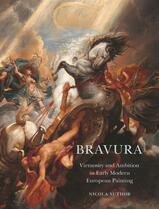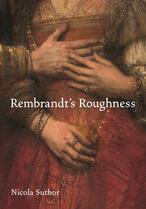Nicola Suthor
M.A., Freie Universität Berlin, 1998
Ph.D., Freie Universität Berlin, 2001
Habilitation, Universität Bern, 2008
Professor, History of Arts
European Art, 1600-1800
Nicola Suthor teaches Northern and Southern Baroque art, in particular painting and sculpture. She looks into the periods of the Renaissance and the Enlightenment for a deeper understanding of the 17th century. Her art historical approach deals with ancient as well contemporary aesthetics and art theories as theoretical framework.
Her research is an effort to understand how thinking about art comes to grips with thinking in art. In conjunction with an analysis of an array of painting practices, she has carried out a series of critical readings in the art-writing of the 17th and 18th centuries, a literature that shows an astounding—and to a certain extent forgotten—sensitivity for painterly phenomena.
Her present research project, “Meta/physics of Drawing: Trains of Thought and the Artist’s Line,” is concerned with the seventeenth-century practice of sketching. Among the problems she is exploring here are the mechanics and automizations of movement processes whose precise knowledge is meant, in a second step, to help determine the characteristic qualities of the artist’s “handwriting.” This research project is based on the thesis that the horizon of possibilities opens up in a process of vague linear articulation: a phenomenon that art-historical literature has at best approached as “autonomous” or empty of meaning but that has usually been simply neglected.
Before coming to Yale in 2015, she tought art history at the universities of Berlin (2012-14), Bern (2007-09), Hamburg (2011), Heidelberg (2009-11), and Stanford (2006). In 2011 she was visiting member of the Institute of Advanced Studies in Princeton. In 2012 she received the Jacob Burckhardt-Price of the Max Planck Institut in Florence.
She was the Robert Lehman Visiting Professor (2017) and the Francesco De Dombrowski Visiting Professor (2020) at the Villa I Tatti, the Harvard University Center for Italian Renaissance Studies, Florence, It.
Suthor’s possible fields for advising include but are not limited to: Northern and Southern Renaissance, Dutch and Italian Baroque, and 18th Century European Art.


Selected Publications
BOOKS
Bravura: Virtuosity and Ambition in Early Modern Painting, Princeton University Press 2021
Rembrandt’s Roughness, Princeton University Press, 2018
Rembrandts Rauheit, Munich 2014
Synergies in visual culture: Bildkulturen im Dialog, co-editor, Munich 2013
Bravura: Virtuosität und Mutwilligkeit in der Malerei der Frühen Neuzeit, Munich 2010
Im Agon der Künste, co-editor and contributor, Berlin 2007
Verklärte Körper. Ästhetische Strategien der Transfiguration, co-editor and contributor, Munich 2006
Ansteckung. Zur Körperlichkeit eines ästhetischen Prinzips, co-editor and contributor, Munich 2005
Augenlust bei Tizian. Zur Konzeption sensueller Malerei in der Frühen Neuzeit, Munich
2004
Ars et scriptura, co-editor and contributor, Berlin 2001
Das Porträt. In Quellentexten und Kommentaren, co-editor and contributor, Berlin 1999
ARTICLES (in English Translation)
Poussin’s Bacchanals: Repetitions and Difference, in: La fortuna dei Baccanali di Tiziano nell’arte e nella letteratura del Seicento ed. by Stefan Albl, Sybille Ebert-Schifferer, Quaderni della Bibliotheca Hertziana ; 4, 2019, 81-101
Braccelli’s Bizzarie. A distinctive form of Commedia dell’arte. In: Rire en image à la Renaissance, ed. By Francesca Alberti and Diane Bodart, Belgium 2018, 451-471
“(Non)Transparency in the Description of a Sketch: Rembrandt’s Christ Carrying the Cross”, Spur der Arbeit: Oberfläche und Werkprozess, ed. Magdalena Bushart & Henrike Haug, böhlau 2017, pp. 127-144
Discipline as emotion: drawing courses and ideology in Early 20th century Germany and Austria, in : Marzia Faetti, Gerard Wolf (ed.), The Power of Line, Hirmer: Munich 2016, pp. 52-69“Art on the Tip of the Brush:” A Blind Manœuvre? Reflections on Correggio’s Brush, Arent de Gelder’s Spatula, and Pietro Testa’s Figure of Practice, in: Vision and Its Instruments: Art, Science and Technology in Early Modern Europe, ed. by Alina Payne, Penn State Press, 2015, pp. 167-189
Guercino’s ‚wet’ drawings, in: RES 63/64, Spring/Atumn 2013: Anthropology and aethetics, Themenheft: wet/dry, ed. by Ch. W. Wood, F. Pellizzi, pp. 80-92
“Il pennello articioso:” On the Intelligence of the Brushstroke, in: Instruments in Art and Science: On the Architectonics of Cultural Boundaries in the 17th Century, ed. by H. Schramm, L. Schwarte, J. Lazardig, Berlin: De Gruyter 2008, pp. 106-126